News 2/12/09
US physicians utilize EMRs at lower rates than several other advanced nations, including the Netherlands, New Zealand, the UK, Australia, and Germany. As of 2006, 28% of US physicians used EMRs and 15% received alerts from them to provide patients with test results. The Netherlands had 98% utilization.
Greenwood Pediatrics (CO) chooses Eclipsys PeakPractice as its new PM/EHR solution. The 10-doctor group opted for the former MediNotes product over a hospital-subsidized Epic solution.
A new KLAS research report claims that more hospitals are looking for aggregation solutions that provide a more complete view of medical records and documentation. Such solutions would help clinicians improve patient safety. The report names six vendors that account for 85% of contracted deployments, with MEDSEEK owning the largest installed base. KLAS concludes the solutions from Microsoft and dbMotion are the most functional. The other top vendors include Medicity, PatientKeeper and CareFx.
Clinicians override more than 90% of drug interaction alerts and 77% of drug allergy alerts, according to a study that concludes electronic alerts as deployed today are more of an annoyance than a valuable tool.
A Princeton economics professor calculates that Americans age 15 and older spent an average of 1.1 hours a week obtaining healthcare in 2007. The figure includes travel time to see the doctor, waiting to see the doctor, the examination, taking medication, obtaining care for others, and paying medical bills. He concludes national healthcare costs are underestimated by 11% by not counting waiting time.
A study finds that found most Medicare programs designed to improve the care of chronically ill patients failed to reduce hospitalizations and save costs. Thirteen of the 15 CMS demonstration programs that included patient education, monitoring, and tracking wellness measures failed to influence hospital stays, while none of the 15 reduced Medicare cost.
Lawson Software announces that MedicalEdge Healthcare Group has licensed Lawson QuickStep Healthcare, HR Management, and BI suites. The Dallas-based practice management group supports over 1,000 providers.
Think all that economic stimulus talk is sincere and well-intentioned? This lobbyist isn’t satisfied that compromise rollbacks reduced the HIT portion of the kitty from $23.9 billion to "only" $21 billion. "Sometimes you have to lose the battle to win the war. We want to see the Senate pass this agreement and we will work during the negotiations this week to restore some of these savings." His lobbying firm lists no healthcare IT-specific vendor clients, just big hitters like Cisco, HP, IBM, Microsoft, etc. so they must be planning to get themselves stimulated.
Regional Cardiology Associates Medical Group (CA) selects the SRS hybrid EMR for its six-office, 22-provider practice.
The AMA joins other doctor and consumer groups in suing Aetna and Cigna, claiming the insurance companies intentionally rigged the data they contributed to the Ingenix "usual and customary" out-of-network rate calculator, thereby lowering physician payments. The insurance companies pout: "We’re disappointed the medical community has chosen to litigate on top of already pending consumer litigation on the same topic," said an Aetna spokesperson.
When Good Doctors Go Bad, Episode 1: the orthopedic surgeon of baseball star Barry Bonds and an upcoming witness in Bonds’ steroid trial is the subject of a restraining order filed by Dr. Michael Eiffert in a spat that took place in California hospital. Eiffert told a reporter that the surgeon exhibited "roid rage" behavior consistent with steroid-induced anger, but later clarified that he had no way to know whether the surgeon was juiced. The surgeon made a comment to Eiffert by telephone, prompting Eiffert to call him a "ding dong who was giving alcohol to a patient," referring to an incident in which the surgeon was accused of making in-hospital cocktails for a patient Eiffert was treating for alcoholism. According to Eiffert’s statement, the surgeon held him to a wall by the neck, threatening, "I’ll kill you. I’ll crush you. You don’t know who I am. I’ll kick your ass. And don’t ever call me a ding dong again." I can’t say for sure it’s the same one, but Michael Eiffert, MD is president of Palo Alto-based MyHealth Inc., and holder of a 2003 patent (warning: PDF) on computer-based patient treatment and monitoring plan.
A former office manager in Maryland faces charges for allegedly stealing over $100,000 from her OB/GYN employer via unauthorized credit card charges and outright theft of cash.
Now that the Senate has passed their version of the economic stimulus package, lawmakers must resolve differences between the House and Senate versions. Within the healthcare IT portion, some of the major differences include:
- The Senate bill would provide about $21 billion for health IT, while the House bill would provide about $20 billion;
- The Senate bill includes less stringent patient privacy provisions and directs HHS to issue rules addressing the disclosure of patient information, while the House bill includes provisions limiting the sale of patient data and the sending of fundraising solicitations without patient consent; and
- The Senate bill allocates about $3 billion for the Office of the National Coordinator for Health IT, while the House version includes $2 billion for ONC.
The Allscripts-Misys Healthcare board of directors approves the repurchase of up to $150 million in common stock over the next two years. Under the buy-back plan, Misys PLC has agreed to sell Allscripts the number of shares required to maintain its current stake in the company. Allscripts also announced it plans to sell its Medication Services business.
Unity Physicians Group (IN) lays off 38 people and closes its call center. Unity provides staffing at several emergency departments in Bloomington, owns and runs six urgent care centers, provides billing services for physicians, and hosts software applications. A company news release says the restructuring was undertaken to “make it more efficient and lower its operating expenses.”
A man accused of stealing a University of Utah backup tape from a courier’s car receives a one year jail sentence.

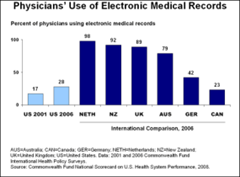


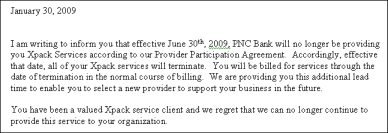

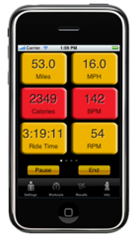



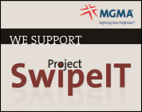
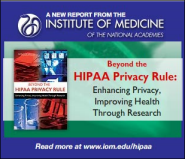
The article about Pediatric Associates in CA has a nugget with a potentially outsized impact: the implication that VFC vaccines…